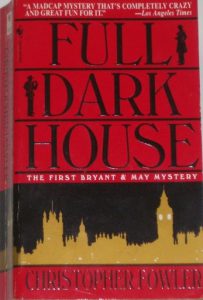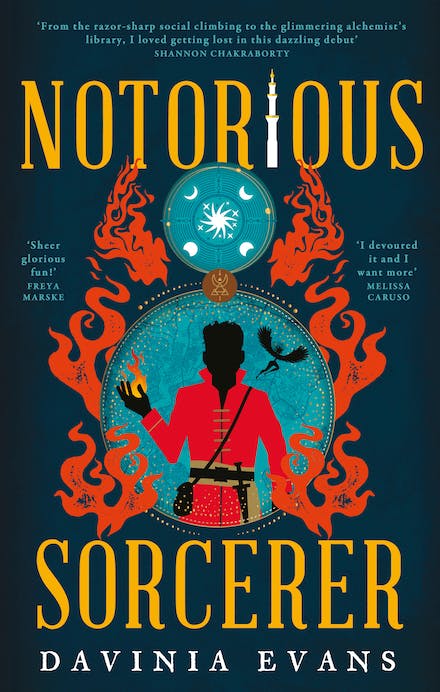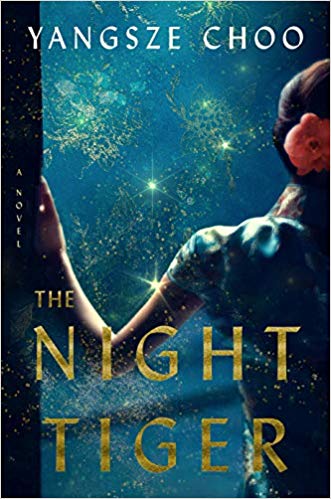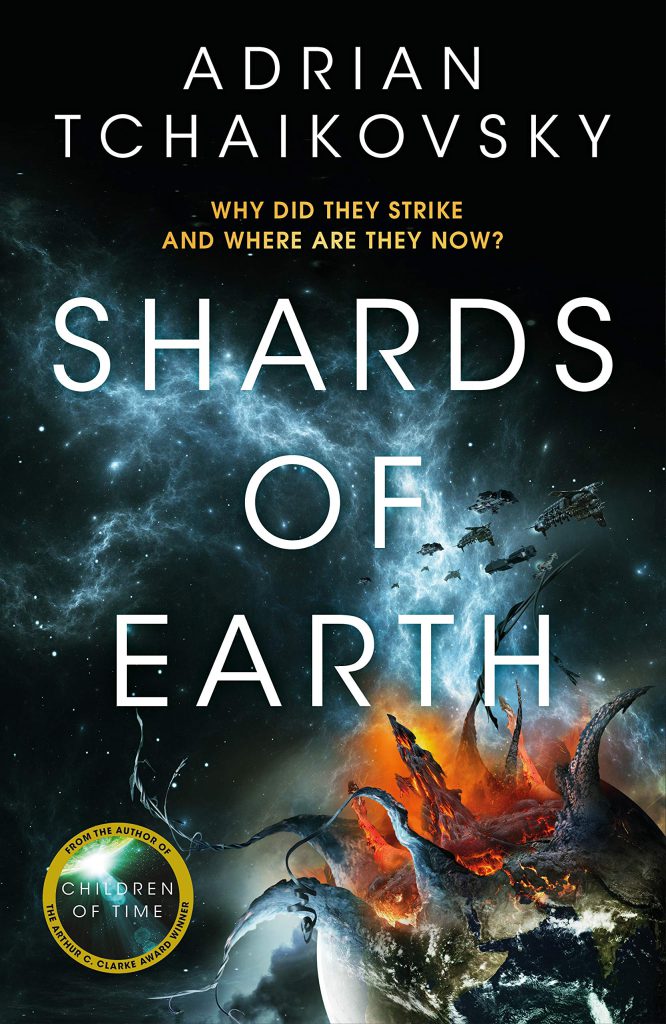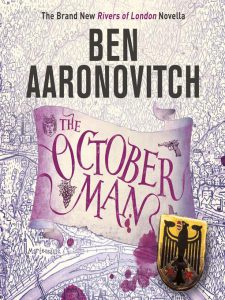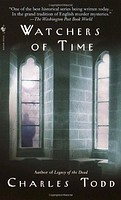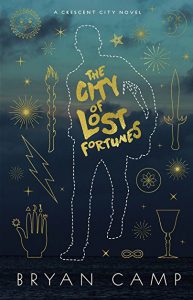Search the Blog
Categories
- Books & Reading
- Broadband Buzz
- Census
- Education & Training
- General
- Grants
- Information Resources
- Library Management
- Nebraska Center for the Book
- Nebraska Memories
- Now hiring @ your library
- Preservation
- Pretty Sweet Tech
- Programming
- Public Library Boards of Trustees
- Public Relations
- Talking Book & Braille Service (TBBS)
- Technology
- Uncategorized
- What's Up Doc / Govdocs
- Youth Services
Archives
Subscribe
Author Archives: Cathy Hatterman
Friday Reads: “Station Eternity” The Midsolar Murders Series by Mur Lafferty
Station Eternity by Mur Lafferty is combination cozy mystery and science fiction, combining both, very well. In what’s usually termed near future, Mallory Viridian is a murder magnet. However, in real life, being one makes you a suspect, not a “charming amateur detective” (book blurb), your friends and relatives shun you, and you fear for their lives.
Despite being able to solve nearly all of the murders around her, and prove her own innocence, she can’t join law enforcement or become a private detective. She finally has enough of life on Earth, and moves off Earth to Station Eternity, a sentient space station.First contact officially occurred shortly before this time with Adrian Casserly-Berry who becomes the human ambassador to Station Eternity. On Earth, he had become an expert in several languages and a professor at a university. He’s always made lists of things he hates. Very long lists. He is, unfortunately, an awful choice to be ambassador.
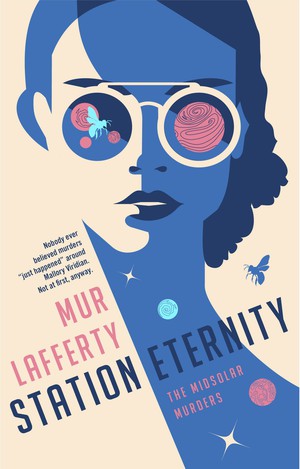
And while first contact had occurred, no restrictions on sightseers and vacationers are in place, so aliens are visiting, without warning, and in random parts of our world. Which is how Xan (Alexander) Morgan, winds up abducted by a trio of rock like Gnies humanoids, who are on a quick trip to Earth. The one drunk on lava has decided to pick him up as a pet, or something. Since he’s in the army, he’s AWOL, a murder witness, possible suspect, and an alien abductee. No probing is done, but a translating bug is inserted in his ear, so he can understand the aliens around him. Their trip to Earth is a quick one, to Earth and right back to Eternity Station, no side trips. All of which is a subject of conversation among the three Gneis.
So, three humans on the station, two officially, several aliens of different types, most with intelligent symbionts of some kind. The soon to arrive shuttle full of humans makes Mallory panic, because, of course, murder victims and murderers are the probable result of them coming here. Xan doesn’t really see the harm (doesn’t believe her.) And Adrian attempts to capture Mallory, to give to whoever is coming on the shuttle. In addition, possibly he already knows his replacement is on it.
In the meantime, the aliens grumble about the strange, wet, humans, and distrust them for their lack of symbionts. Start Trek, this isn’t. But it is a fun, different world, and well built. The three Gneiss from the abduction of Xan are friends, but one of them is being kept on the station against her will by her grandfather, who has become a shuttle. (Yes, a Gneis rock person became a functioning space going vessel.) She’s come up with a plan to move on to be mobile herself, but it will upset the entire population of her people on the station.
Then the station’s symbiont is murdered, just as the shuttle from Earth arrives, and is attacked, leaving only 11 survivors. It spirals quickly out of hand from there. It’s an entertaining read, difficult to explain past “cozy mystery and science fiction blend”, but even more interesting for being complex.
Next in the series, Terminal Chaos is out, just as wild a ride as the first title.
Station Eternity, Midsolar Murders Series, by Mur Lafferty, 2022, Ace, an imprint of Penguin, Trade Paperback, 453 pages, $17 ISBN 978-0-593-09811-0
Friday Reads, Mickey 7, by Edward Ashton
Mickey 7 by Edward Ashton is hard science fiction set in the far future. Mickey Barnes was born on a colony world where the hardest part of settling the colony is over. The planet is terraformed, and it’s safe to live there. Life is nearly ideal, except Mickey has no scientific or technical talents; he’s a historian on a world where everything can be looked up online. He does get a subsistence pay, but he’s gotten into deep debt, and needs to get off the planet, and there’s only one way off—the colony ship that’s been put together at great expense to the colony. Everything is weighed to the last milligram, and even the colonists pared down belongings aren’t allowed on, at the last minute. And his only way on is to become an “expendable.” The one member of the new colony that can die and be printed from a vat, with his mind transferred. You see, on the trip, and in the settlement, the robots they have can’t be replaced, but the expendable can. Plus, they have found, that the human body takes longer to shut down in adverse situations, like intense heat or radiation, than the electronic bots.
The story starts in real time stream, starting with Mickey 7, on the new colony world, an ice planet, falling down a crevice, and getting slightly (for him) injured. His air cover won’t come to help him, for fear of the creepers, the local life forms. He’s too deep to be rescued, but is rescued by a huge creeper, and set outside tunnels running under the planet’s surface. This is the source of the latest problem, when the air cover flyer got back to the settlement, he reported Mickey dead, so number 8 was printed. And Mickey 7 returned. The colony can’t support one more person, but neither want to die. There is a taboo about having more than one duplicate existing at a time. The explanation of the taboo, Mikey’s multiple deaths, and research into how other colonies have begun are the rest of the story. The author handles several heavy themes quickly, with humor. Where do you go for privacy, in a colony with just public spaces, with only under 200 people, when you can’t be in your room? Not being seen by the same people in overlapping times is much more difficult than one would suppose, and Mickey 8 is far less concerned about dying, that Mickey 7.
And then there are the creepers. When the planet was surveyed, it was done from their home planet. Since no industry was detected, and it seemed to have enough oxygen, and was just in the “Goldilocks zone” for life, it was thought habitable. When they got there, it was covered in ice, with unbreathable air. The creepers showed up, and seemed to be mere animals. However, Mickey discovers that their tunnels are evenly spaced at one hub. He has had a sneaking feeling for a while that they may be sentient. Which is just another of Mickey 7’s problems—to report, or not report. Especially since he believes, the leader of the expedition will not only end his life, but the indigenous life forms, too. So, of course, it gets much more complicated from there.
An interesting, and surprisingly funny stand alone, with some deep thinking hidden inside.
Mickey 7, by Edward Ashton, hardback, St. Martin’s Press, ISBN 978-1-250-27503-6, 27.99.
Friday Reads, the Wizard Hunters, Book 1 of the Fall of Ile Rien series, by Martha Wells
Years ago I read The Wizard Hunters, by Martha Wells, and waited expectantly for the rest of the series to come out, The Ships of Air, and The Gate of Gods. So after reading her more recent work (the Murderbot series), I wondered how the older series compared. It’s still wonderful world building, character building, and plotting,
We meet Tremaine Valiarde at her home estate, trying to find a suitable manner of suicide. Her city, country, and world, are under attack by an unknown enemy they call the Gardier. They don’t even know where on their world these people come from. The sinister black dirigibles started attacking with bombs and were protected with a magic they couldn’t protect themselves from. Tremaine has been working in the war effort, risking her life in the ruins to save lives, and is so very tired. She’s been put on leave by her relief group. In Tremaine’s world, Ile Rien is her country, somewhat French in flavor, and set approximately the early 1900s—along with magic and wizards; there are telephones, electric lights, radios, motor cars, and guns.

Tremaine is recruited, with a magical childhood toy, the Damal Sphere, to assist in classified work on an unknown spell left by the foremost wizard of her country, and her godfather, Damal, and Nicholas Valiard, her father, after they disappeared shortly before the war. The sphere had been copied for use with the spell, but backfired tragically. The hope is that the original will make it work correctly. It does, of course, and transports them to a different world. Where wizards are called Sorcerers and are all homicidally mad. The natives of the closest nation are Syprians, and each city is built near a magical source they call a God, which protects them from sorcerers, and their creations, curslings. It is on a small island off the Syprian coast often used by sorcerers, that the group from Ile Rien find themselves shipwrecked. A Chosen of the God, Giliad, and his foster brother Illias, are trying to check the same island for the return of a sorcerer, which is their job, to find and kill sorcerers. Instead of traditional sorcerers, they find a Gardier base. Since the technology is beyond their own level, the assume most of it is “curse” driven, (spelled), when it’s actually guns, electric lights, and an air ship. But the Gardier have magic, too. The pair have never seen or heard of these people before. Syprians are well-traveled merchants, trade with other countries and groups in their world.
Tremaine is an interesting character to begin with, her father is much like a blend of Sherlock Holmes and Moriarity. Two of her guardians are wizards, and one, unknown to her until the events of the book, is one of the Queen’s guard. While she herself feels a bit split about her personality—she was known as a playwright before the war, and the way she can react to threats, is commented on by her new friend, Florian, a wizard in training. She tries to keep the more menacing side of her personality hidden, as well as the strange set of talents learned from her father and his friends. However, in the situations in the series, she certainly grows to accept them, as they come in handy.
Illias and Gilead, from the Syprian mainland are also an interesting pair of men. Their civilization is a matriarchy, so property is passed through the female line, although wars are fought by both sexes. As a Chosen of the God, Gilead can sense “curses”, but has more difficulty sensing the spells of the Ile Rien wizards. They both have a tragic backstory, where a sorcerer fooled them both, and cursed to death three female members of their family.
The Fall of Ile Rien series is much like potato chips—it’s hard to stop at just one.
Posted in Books & Reading
Tagged Fantasy, Friday Reads, Martha Wells, The Wizard Hunters
Leave a comment
Friday reads: Full Dark House, by Christopher Fowler
I noticed among the new titles shown at the library, the latest Bryant and May, Peculiar Crimes Unit title was out. So, instead of picking it up, I went and started at the beginning. The first title in the series is Full Dark House, by Christopher Fowler. When he launched the series he had 10 literary titles, and over 100 short stories written, according to reviewer, Joe Hartlaub, of Bookreporter.com, who describes Christopher Fowler’s writing as quirky, and in Full Dark House “There are elements of mystery (ala Conan Doyle and Agatha Christie), police procedurals, horror, history and suspense aplenty here.” It is one of the best, most atmospheric stories about the bombing of London during World War II, and the citizen’s response to it, I’ve ever read. It made me feel the terror and unease of everyday life at that time. Fowler also laces it with the humor, sometimes dark, such as is often found in the TV British detective series “Midsomer Murders” as well as the odd murders, and strange motives for murder.
Two stories run beside each other, the bombing of the unit in the present day, and the murders that brought eccentric Arthur Bryant and scientific John May, together in Nov, of 1940, when they were 22 and 19. Bryant was doing research on his memoir, reading notes about the case, and had gone to the nursing facility where the last person living concerned in the events of 1940 resided. Bryant often stayed at the office overnight, so when the office exploded in the dark of early morning 2003, and a body is found there, it is presumed his.
The case in 1940 involves deaths in a theater in London called the Palace, and a controversial, intentionally risqué, production of Orpheus in Hell, by Jacque Offenbach. The production is set to run all during the war, as a distraction from the horrors, ostensibly, and produced by a Greek Shipping Tycoon. The most puzzling thing about the murders is the lack of evidence, and the lack of motive.
There is atmosphere in both timelines, but especially the World War II scenes of London with details like “Get you home” booths, that I’d never heard of before, to help citizens find their way home among bombed out streets, after the all clear had been blown. Reminders of black out curtains, and cross tapping on windows, to reduce flying glass from bombing enhance the atmosphere. The current timeline shows how much time has elapsed for the detectives, the changes in the city, and the grieving of the remaining staff of the unit, plus the state of gang relations in 2003 in London.
This is not a cozy mystery, but, it is intriguing, well written, and, yes, quirky. The Peculiar Crimes Unit continues on, with the two oddly matched detectives far past retirement age, solving murders in unusual ways. I admit, I’m on my third story, the fourth in the series.
Full Dark House, by Christopher Fowler, a Bryant and May Mystery, C 2003, A Bantam Book, Doubleday UK hardcover ed.,
Next in series is The Water Room
Friday Reads, Notorious Sorcerer by Davinia Evans
The seaport of Bezim is the only place in the world of Notorious Sorcerer, where alchemy actually work., The other three planes of existence, which correspond to the other three alchemical elements Air (Aethyr), Fire (Empyreal), and Water (Aby), can be reached from there. Alchemists work their wonders, in industry, medicine, or purely for science, by mixing elements harvested from the other planes by petty alchemists like Siyon Velo. It’s a chancy business, but he’s already a risk taker, a member of a swashbuckling street gang (bravi), one of several gangs, who fight (only three quarters seriously), dual, run across rooftops (yes, really), mock attack parties, and are paid to protect parties. Neither alchemists nor bravi are strictly legal, but as long as no one splits the city in half, everyone gets along. Because once alchemy was taught at University, was respected, until a great working went terribly, horribly wrong, and the city was split, one side down by the harbor, the lower city where the docks and industry are, and part lifted up, where the Flower District, the Commercial District, the University, and the Avenues, (where the Avatani live.)
So. Of course, it all goes fine, until one of Siyon’s fellow bravi, Zagiri, gets caught in a youthful bit of foolishness gone disastrously wrong, and Siyon catches her from a deadly fall, not with alchemy, but, with, well, he doesn’t know how he did it. What he did do was upset an already perilously balanced peace. And the chase is off– over roofs, through allies, slowing down now and again, ending at her sister’s house. Anahid and her husband, who is an alchemist and member of the Summer Club, a registered alchemist. The story just gets more complicated from there. Alchemists try to put right what’s gone wrong, Siyon tries to prove himself as an alchemist, so many things go wrong, and many things go right. I can’t tell you how it all works out, there just isn’t space!
The point of view runs from Siyon Velo, petty alchemist; young Zagiri Savania fellow Little Bracken bravi, and 18 year old female member of the avatani (both a people and a highborn caste), Anahid Joddani, Zagiri’s older sister, who has walked through the traditional paths to adulthood, and regrets it; and Izmirlian Hisarani he’s gone on voyages of discovery, and brought back wondrous things, but he has no interest in trade, and now he wants to go further, which is why he needs an alchemist. All of them are trying to find their way through different paths to get to what they want. All of them grow through the experiences.
This is complex world building, combining politics, a fairly ordered magic system, and set caste system, and very well done characters, all thrown into a very precarious situation. No one really knows what to do to set the magical balance right. The policing arm of the government is heavily patrolling the streets and arresting all practitioners. And the characters are all second-guessing themselves.
Notorious Sorcerer, by Davinia Evans, The Burnished City, book 1, Orbit , subsidiary of Hachette Book Group, 2022, 978-0-316-39803-9. The sequel, Shadow Baron, The Burnished City, Book 2, is due out November 14, 2023. Sigh.
Friday Reads, The Night Tiger by Yangsze Choo
The Night Tiger, by Yangsze Choo, reflects an exotic world, made both strange and familiar, for being set in 1930 Malay, (now Malaysia), a world of many races, including the white “foreigners” (British colonials.) The title has been selected for the Elizabeth II Jubilee list of titles, 10 books for each year of her reign. The story combines murder mystery, a quest, a ghost realm, were-tigers, and Chinese numerology, and the mythology of Malay. Oh, and a love story.
Yangsze Choo mixes exposition and action well. Her characters are interesting, her narrative goes from a young Chinese orphan houseboy, in present tense; an educated 21-year-old young woman forced to apprentice to a dressmaker, instead of continuing school, in past tense; and an English surgeon, in present tense. I found it an interesting style point, which brought Ji Lin closer as a character.
The story starts with the houseboy, Ren, 11, who is taking care of his dying master, an old, English doctor. The man lost most of his little finger in a surgery, and wants Ren to find it and bury it with his body within 49 days, or his master’s spirit will wander, forever. The Dr. lived in Malay a long time, and was especially interested in were tiger mythology, especially after a man who identified as a were tiger, called him one, too. The Dr.’s fevered dreams are haunted with images that might be seen by a tiger hunting. Ren is disturbed by this. He has repetitive dreams of his dead twin brother, which might be more than just dreams. Ren journeys to work for Mr. Acton, an English surgeon at the hospital in another town, Batu Gajah, and on the trip from the train station, learns there have been dogs eaten by a big cat, most are guessing a leopard.
Ji Lin, 20, has taken a second job dancing with strangers to help pay off her mother’s mahjong debt—exacerbated by being taken over by a loan shark. Not one of the more acceptable jobs for a young woman, at the time, but high paying. The woman who runs the May Flower Dance hall keeps things above board, there are bouncers, and only men with tickets are allowed to approach “the dance instructors.” One day, a particularly predatory man chooses Ji Lin to dance the tango, and boasts about many things, but mostly about being lucky. So while being tortured by bad dancing, mashed toes, and wandering hands, his good luck charm falls into Ji Lin’s possession. It turns out to be the old doctor’s little finger in a small specimen jar. All Ji Lin knows, is that it’s gruesome, and wants to get rid of it properly.
The path of the finger in a specimen bottle is traced with sudden deaths, near misses, and fevers, until it is finally buried with the old doctor. Along the way, a child matures, a young woman becomes engaged in a broom closet, and a murderer is captured. To be truthful, it’s so much more complicated than that, which is the fun of reading The Night Tiger.
The Night Tiger, by Yangsze Choo, Flatiron Books, (Macmillan), ISBN 9781250175458, hardcover
Friday Reads: Shards of Earth, by Adrian Tchaikovsky
Shards of Earth, by Adrian Tchaikovsky, is science fiction, by a British science fiction and fantasy master. The characters are engaging, human, (and intriguing when not human.) The idea of an alien which is moon sized that can travel faster than light, each a single being, called the Architects, is remarkable. That it’s an absolute killing machine pointed at all inhabited worlds pulls the fractured colonies of Earth and all the known aliens into war against it. The story is not about the war as much as about the final secret weapon that made victory possible. And what happens to that weapon after the war. This only makes sense in that the weapons that win the war are called Intermediaries (Ints), and are humans, medically and chemically modified to be able to mentally contact the Architects. Idris Telemmier is one of the few remaining original class of Intermediaries. He is a war hero. Due to his modifications, he hasn’t aged since the end of the war fifty years ago. Intermediaries can contact Architects, and they can pilot deep space craft through unspace, without having to sleep during the process.
Unspace, unlike some forms of faster than light travel, must be experienced by most sentient beings asleep. If they are awake, they are immediately isolated from other travelers on the ship in unspace. Not only of being alone, but also of being alone with a hostile, unspeakable being that they can’t see, only sense. Most ships travel old routes mechanically, with the pilot being the first to wake, but Intermediary pilots go through unspace awake. They can plot new paths to objects, making Idris especially valuable to his crew on the Vulture God, a salvage ship.
An old war acquaintance of his, Myrmidon Solace, is tasked with contacting Idris on the ship he currently pilots. Solace is from a genetically engineered, and vat grown race of human women warriors who live on their ships, and they are known as the Parthenon. They do not have Intermediaries. Hugh (Council of Human Interests), the governing body of the colonies controls the program, and licenses them. Hugh won’t license any to the Parthenon in the post war era.
Making Intermediaries is an uncertain business. Idris, being first generation, is even more unusual, since he hasn’t aged, and can’t sleep. He’s one of two or three surviving from that first generation. He’s content to work on the salvage ship. The trouble starts with a shore leave where a rich man decides to confiscate him, since later Ints are licensed and conditioned with a “leash” contract (making them more like property.). That doesn’t pertain to Idris. His crew, with Solace, manage to get him off planet, but the job they pick up next only multiplies their troubles—it’s a modern salvage that has the distinctive, destructive design of an Architect kill. Except the war ended fifty years ago, with the disappearance of the Architects, and no one has seen one since.
While some reviewers compare the story to Star Wars and Star Trek, there is a lot more here, and a far more patched up universe. The characters are interesting, the main ones are three-dimensional, and the world building is complex, with more than one political system. One of the characters is Oliana (Olli) Timo, a woman who’s colony found all human life precious, even a child with stunted arms, part of one leg and no sense of her own body—since the age of thee she had become a remote vehicle specialist. And easily one of the strongest, and most physically powerful characters in the story. Which is why she has a very big problem with Solace, a vat grown perfect human. There are more interesting points like these that made the entire story deeper than many of the “space opera” style stories. There’s a colonies’ wide “nationalist” movement to put “humans”, the original type from Earth, first, and that all other types are traitors. Which also has a violent arm. There’s a race no one’s seen, but has lost their planets to the Architects, called Locusts, who use planets to create world ships. There’s an alien mobster and a human aristocrat, who both want to own Idris. And there’s a spy/cop, who is just trying to figure it all out.
With complicated characters, great plotting, and constant action, this is one of the best books I’ve read lately, and I’ve just read the sequel, Eyes of the Void. I’m looking forward to Lords of Uncreation, due out in 2023.
Shards of Earth, The Final Architecture: Book One, by Adrian Tchaikovsky, Orbitbooks.net, Hardback, 2022
British Science Fiction Association (BSFA) award winner for best novel, 2022.
Posted in Books & Reading
Tagged Adrian Tchaikovsky, Fantasy, Friday Reads, Science Fiction, Shards of Earth
Leave a comment
Friday Reads: Uprooted by Naomi Novik
Uprooted by Naomi Novik is a high fantasy with a romance (not a typical one), set in an area much like Poland (where there is magic.) No elves. Knights, wizards and witches (female wizards), armies, serfs, noblemen, nations at uneasy peace, and a magical wood. Doesn’t sound that bad, does it? But the magical wood takes people, changes them, and makes them monsters that contaminate others, and kill in gruesome ways both humans and animals. This is the world Agniesszka lives in, near a village, in a valley near the Wood. Keeping the Wood contained is a wizard called the Dragon, who takes a girl from the villages every 10 years, to live with him in his tower. Agniesszka, and her village believe her friend Kasia will be chosen, because she’s beautiful, friendly, and talented. Agnieszka can get dirty just walking to the cart to go to the village. She can also find fruit out of season in the forest; she finds the most nuts gleaning in the forest. But never goes into the Wood. The girls chosen by the dragon return to their villages, but never stay. Often they go to the city and the university. They come away from the 10 years with the Dragon different, even though they protest he never touches them.
So, when the time comes, it is Agniesszka who is chosen. She doesn’t realize it, but she herself has magical abilities, and it is against the law to let the magically talented to go untrained. It takes her some time to understand that it’s her own power, and not the dragon’s, powering the spells he makes her say. The Dragon is a young looking man, who is cold, distant, and irritable. (Living 100 years battling an evil Wood might do that….) That makes the entire learning process harder, of course, but eventually she yells back at him, and they both learn a way of doing magic together. There is the usual, accepted, structured magical practices, and then a sort of organic, one once practiced by a famous witch with a name very similar to Babba Yagga. Agniesszka is attuned to this type of magic. Her skill gleaning, and the way branches reach out to her in the forest are signs of it. Although this tale isn’t heavy on romance, with hearts and flowers and speeches, it is there.
The story highlights the strong female friendship between Kasia and Agniesszka, and the developing relationship with the Dragon. The loss of the younger Prince’s mother to the Wood twenty years ago grows into a conflict with the Wood itself. Which is also about a love story, a loss, and a betrayal. But you’ll have to read it to find out how that happens, and how the Dragon and Agniesszka deal with it all.
A very interesting, unpredictable story, with the characters it is based on, a girl and her wandering yellow cow, (the Polish folk tale that inspires this story) near the end.
I loved this book. It is a stand alone, from Naomi Novik known for her Temeraire series. There is another title that is also set in this world, called Spinning Silver that I’m looking forward to reading.
Uprooted, by Naomi Novik, trade paperback.
Posted in Books & Reading
Tagged based on folktale, Friday Reads, High Fantasy, Naomi Novik
Leave a comment
Friday Reads, The Councillor, by E. J. Beaton
The Councillor, by E.J. Beaton, is high fantasy, with a Machiavellian twist, whose author’s first book was poetry. It adds to the flavor and fits the pageantry of this political fantasy. The world building is interesting—a lot is accepted as normal, such as men and women both being soldiers, business leaders, politicians, artisans. And Lysande, herself, the Palace Scholar, is a woman in service to the Queen of Elier, who is called the Steel Queen. The Queen herself picked Lysande out of an orphanage to become the Palace Scholar. And raised and befriended her from that point on. She also receives an envelope, making her the Councillor, on the death of the queen, to pick the next heir to the throne. A duty that leaves her very uneasy.
Not only are men and women equals, it even seems, in an understated way, women are expected to be the leaders. Lysande herself, as well as the queen, are taller than the commander of the castle force. The majority of the rulers of the nation had been queens, no few of them warriors. Primogeniture doesn’t seem to be the usual way of naming a successor. Sexuality is more fluid, attraction and romance is not confined to heterosexual conventions. And, all of this is in the background.
I very much enjoyed this fictional debut. So much of the world building is just part of the story. Lysande was in an orphanage as well as many other children, due to a long war freeing the populace from the threat of the “White Queen”, a magically endowed contender for the throne. Magic users are known as elementals, and are magically in power of an element, such as earth, fire, water. At one time in the distant past, the Elementals were the rulers of the country, until they were cast down. Leaving the populace very anti-magic, to the point of executing anyone suspected of being an Elemental. A point of the law Lysande has often debated with the queen.
Lysande is an interesting, flawed character, herself. She never seems to think it unusual that the queen should take so much interest in her although as the Royal Scholar, she is still a commoner. The nobility, here called silver bloods, certainly never let her forget her humble beginnings. She even keeps her lover, a friend from the orphanage, a secret, from everyone in the castle. Partially in compensation for her perceived shortcomings, she takes a magical drug, made of the scales of a chimera, an extinct magical beast. However, all her study of history of the reigns, wars, and kingdoms of the realm serve her well in dealing with the four city rulers who come to be considered for the throne.
The story is not a simple sword & sorcery, but a political, renaissance type tale, mostly told from a complex character’s viewpoint about the difficulty in deciding who should reign over the realm. There is even a sequel that I hope follows up on some of the dangling threads left at the end, and I am definitely looking forward to it.
The Councillor, by E. J. Beaton, DAW Books, Inc., 2021, ISBN978-0-7564-1699-7
Friday Reads The October Man, by Ben Aaronovitch, novella
The October Man, by Ben Aaronovitch is an offshoot of Aaronovitch’s The Rivers of London series, and perfect for the coming Halloween season. Set in the city of Trier, one of the few Roman conquered cities in Germany, this modern urban fantasy runs, KDA Polezei Tobias Winter, and local officer Vanessa Sommer, up and down hills, staircases, and steep vineyards in a puzzling magic and mythology-laden case.
Tobias is a member of the Abteilung Komplexe und diffuse Angelegenheiten (KDA)—Department of Complex and Diffuse Matters, a lovely, and vague way to say that his division looks into what it calls “infractions” –of a supernatural nature, often involving death. No aliens are involved, but, as in Aaronovitch’s other stories, a great many creatures from myth, plus, of course, river spirits. Tobias is the Director’s apprentice, just as Peter Grant of the Rivers of London Series, is an apprentice of the Nightingale. Vanessa Sommer is a Kriminalpolizei officer in Trier, specializing in crimes involving wine. As the story develops, she also has a budding talent for magic.
The mystery begins with a dead male body, covered with a fungus called Botrytis cinerea or Noble Rot (sometimes introduced to grapes to create a sweet wine, ) and not usually found on humans, much less as a cause of death. The body was dumped below a steep field of grapes, and above a river. The victim was a member of a club of mostly middle-aged men, who started with the quote from Johan Wolfgang von Goethe, “Life is too short to drink bad wine.” They begin by drinking good wine, but eventually branch out by beyond their comfort zones, taking classes, going to museums, going to live theatre. When the first death occurs, it was actually at the point of starting to voluntarily disband. Every member had improved his life and was happier in it. Tobias and Vanessa have to discover how magic is involved.
The owner of the vineyard is involved, as well. The Stracker family had a connection with the river below, the Kyll (or Kelly, as she prefers to be known when walking around town.) When Jacqueline Stracker inherited the vineyard from her grandfather, she returned from working in the wine country of California, and that may have started the supernatural activity. And when pressed about unusual activities, admits to following her grandfather one night when he made a “wine sacrifice” to the river, intending to steal the bottles. She was very surprised when a shining, nude woman walked out of the water and gave her a message for her grandfather, that the compact was broken. She never mentioned the incident to family.
Aaronovitch’s writing is addicting, his descriptions of the countryside and highways can be confusing, but add texture to his stories. His characters have depth. I’d like more stories about these two. It doesn’t hurt to have an interest or background in folklore and mythology, but it certainly not necessary. Just sit back and enjoy the ride.
The October Man, by Ben Aaronovitch, A Rivers of London Novella, Subterranean Press, ISBN 9781596069084, hard back. 208 pages.
Posted in Books & Reading
Tagged Ben Aaronovitch, Friday Reads, Horror, magic, Rivers of London series, urban fantasy
Leave a comment
Friday Reads, Dead in Dublin, by Catie Murphy
I rarely have the good fortune to pick up the first in a series, but this time I picked up a fun read, a cozy mystery called Dead in Dublin, by Catie Murphy. Not only is the writer excellent, but she also lets one have a very good view of Dublin, and Irish culture. The writer keeps the reader working to catch up with the mystery, too.
Megan Malone is an American retired combat medic, veteran of 20 years in the U.S. Army. She drives limos and town cars for a living for the Leprechaun Limo Service in Dublin, Ireland, and has for three years. She enjoys hearing her passenger’s stories as well as driving them through Ireland. She’s picking up a famous American food blogger & her husband, when the blogger drops dead in front of the Molly Malone statue near the restaurant they were having dinner. Her husband, a doctor, begins CPR, and Megan arrives from the nearby car to help. The restaurant owner is a friend of Megan’s, Fionnuala (Finn) Canan, is frantic about the fate of the blogger, and worried about her restaurant’s reputation, as is her partner, Martin Rafferty, who also runs an adjoining club upstairs, since both will be closed over the weekend. Megan is the chef, and Martin is the moneyman—finding loans and silent partners. Megan keeps meeting red headed handsome detective garda (what the police are called in Ireland), Paul Bourke, as she asks questions. He in turn, is both annoyed, and intrigued by the “Yank.” Fortunately, for Finn, the blogger didn’t have food poisoning. She was poisoned.
The story is filled with information about the city—street signs are on the buildings, making them hard to see, even to the natives. Housing is in short supply, and very old, historical, even. Doughnuts are still not like our doughnuts—they look pretty, but taste like bread with frosting. With the historical and cultural information, is a lot of computer and cell phone texting, calling, and Voning (Video phoning, a term one of Megan’s friends wants to make a “thing”.) As well as modern cultural run ins—one bit of gossip has the blogger having an affair with a young woman. At another point in the story, Megan is speaking to a slender, young adult, with long hair, and dressed in baggy clothing, gender undetermined. Altogether a very modern story, set in a very old city, among people with their own way of doing things!
Spoiler alert. Catie Murphy is also C. E. Murphy, writer of “award-winning fantasy and Scifi books”, quote from the back blurb about the author. She’s one of my favorite authors. I hadn’t realized who the writer was until I started writing this Friday Reads, and found the blurb!
2nd title in the Series, Death on the Green, is out.
Friday Reads, Watchers of Time, by Charles Todd
First thing I do in the library is scan the new books shelves, and last time, I picked up a title, Watchers of Time by Charles Todd (fifth in the series.) I recalled part of a review I’d read about a Scotland yard inspector who had been an officer in World War I, and had returned home, with a ghost in his mind. I knew this wasn’t the first of the series when I picked it up, but what little I could remember of the review, plus the intriguing blurb, made me take it home.
This is more than escapist reading. Mr. Todd has done his research on both the after effects of World War I on both the civilian population, and the returning soldiers, such as Inspector Ian Rutledge. Hamish MacLeod, the “ghost” in his mind, was one of the men he had under him. He also suffers from “shell shock”, and claustrophobia. So many of the men who returned were shunned because of “shell shock” or that the part they played in the war was not “sporting.” There was still an extreme difference between the perception of war, and the reality of modern war in the civilian population.
The other thing that elevates this from the usual mystery are the wonderful descriptions of the countryside, set in Norfolk County. This section of the country is called the Broads, and is marshland, where the sea has receded & filled in with only a small tidal river. It is Autumn, but still early enough for some flowers to be in bloom. The town, Osterly, was once an Edwardian vacation town, in a small way, but when the ocean receded, the vacationers stopped arriving.
The Bishop in Norwich wishes Scotland Yard to check the work and circumstances of a priest’s death. This was still a shocking event in a small town in England. Inspector Rutledge is sent to check into the progress being made in the case, and why the Bishop wants an Inspector to check into it. While everyone believes the local inspector to be competent for the job, there are still questions in Inspector Rutledge’s mind. There are also some odd connections between the case and the sinking of the Titanic.
Watchers of Time; An Inspector Rutledge Mystery, Charles Todd, Bantam Books, 2001, 978-0-553-58316-8, paperback.
Friday Reads: City of Jade by Fonda Lee
I really enjoyed Jade City by Fonda Lee. While many reviewers drew parallels to the Godfather, I felt more as if I’d been transported into a somewhat different, contemporary Asian city, such as 1990s Hong Kong, Tokyo, or Bangkok. Years ago in this world, Kekon Island, and its people were in a war fought over the control of bioenergetics jade, a stone that gives the wearer super abilities, such as strength, perception, or making the body lighter. The warriors who wear jade, (called Green Bones) use it for added abilities, especially in combat. The war was settled, and foreign soldiers and overlords were defeated. Two of the heroes of that war founded families that helped control the exportation of bioenergetic jade. In the modern capital city, an added source of tension is the introduction of a drug called “Shine”, that can be used to give the ability to use jade to those who don’t have the natural ability. It also has a cost, addicting those that use it.

The characters are complex, and the source of the magic is intriguingly crafted. There is even a world stage, where events in the city and small island, make a difference, as well as influences the action in the story. The book is compared to the Godfather, and mob based movies and books. It’s also been compared to Wuxia (wooSHya) stories, wandering kung fu masters. Science and magic exist side by side, in this 20th century city. There are also family, and interpersonal relationships that helped pull me into the story, along with the awesome world building.
It is also a multiple viewpoint story, with a family with all the quirks of a real one. Kaul Sen, the grandfather, fought in the liberating guerilla war, where his son Kaul Du died. Kaul Lan, 35, the oldest grandson, is the current Pillar, leader of the clan, competent, cautious, and ambassadorial. Kaul Hilo, is the Fist of the clan, an extroverted, impulsive younger man. And their sister Kaul Shia, has come home from college abroad, with a degree in business, and determined to construct a life for herself away from clan business. A large part of clan business is the regulation of crime, especially the ownership of bioenergetic jade, only legally used by “Green Bones” Kekoneese clan members, whether they are warriors or lawyers, or businessmen. This jade, only found and mined on Kekon island, grants those attuned to it to use powers verging on magical, strength, lightness, perception, healing, to those who are trained to use it. It is only a stone, to the Abukei, indigenous to Kekon. The rest of the world, it is used by special armed forces, with the help of a drug called “Shine.”
The family itself has enough conflict for a novel, but the jade being mined is not all reaching the Kaul clan. The Ayt clan is trying to consolidate all the clans in their own. Violently, for the most part. The island is still not free from the foreign interests that they warred in an earlier generation.
Jade War, is the second title in the trilogy, and is already out.
Posted in Books & Reading
Tagged asian writer, Fonda Lee, Friday Reads, Serial Fantasy, urban fantasy
Leave a comment
Friday Reads, Death on Demand by Carolyn G. Hart
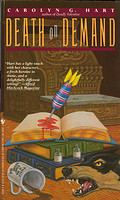
Carolyn G. Hart’s Death on Demand is the first in a series of cozy mysteries located in Broward’s Rock, South Carolina, an island. Annie Laurance moved to Broward Rock to spend the summer with her uncle, he dies in a boat accident, and so she inherits his bookstore, remodels it, and names it Death on Demand. The story begins with a list of items, and an incident and death in a veterinary clinic. Then, with hints already placed, we meet Annie, in her bookstore, putting off a phone call. Instead of making the call, she receives a call from Max Darling, the young man she was attracted to in New York City. She left no forwarding information; he’s had to find her through a series of calls and detective work. In addition, because he tracked her to South Carolina, he’s also driven down from New York, to visit, and find out what took her from her career in the city. And away from him.
I had missed Ms. Hart’s writing as much as these two characters. Annie is a straight shooting girl from Texas with a strong work ethic, and Max “delighted in ambiguities, disdained certainties, and loved above anything to puncture pretensions.”* But he makes her smile and her heart lifts when she finds out he’s in South Carolina. And the tiny island has several mystery writers of some note living there full time, as well as a small town community. What could go wrong? Well, at the usual meeting of the writers, her landlord, a true crime writer, has told her that he’s going to share information in his next book—about his fellow mystery writers’ dirty laundry. And the writers are as varied as possible, thriller, cozy, police procedural, children’s and true crime. At the party, the lights go out, the usual kerfuffle of bumped tables, people shouting, and offering directions. When Annie gets the lights on, her landlord is found on the floor with a dart in his throat, and dead. When the sheriff arrives, he blames Annie, for both the death of her landlord, but also her Uncle, with whom she had a close relationship. It all spurs her to clear her name.
I will admit the series begins in 1987, so sometimes one has to recall the state of technology, not just phones, but computers. So much needs to be seen in the correct timeline. The island also relies on a ferry that crosses to and from the mainland at set times. Although there are private boats, and a marina, the story reads like a closed system. Also, the two main characters, (and the author), throw in references to mystery writers and their books, from the golden age of mystery to the present. Which, if you don’t know them, will have you writing lists of titles of books. And did I mention Ms. Hart’s writing? This is just the book to read, or reread, during stressful times.
Death on Demand, by Carolyn G. Hart, 1987.
*quoted from Death on Demand, Chapter 3, page 7, in omnibus, Death on Demand/Design for Murder, Bantam Book, printed in 2008.
Posted in Books & Reading
Tagged Carolyn G. Hart, cozy mystery, Death on Demand, Friday Reads, South Carolina
2 Comments
Friday Reads: Tuesday Mooney Talks to Ghosts, by Kate Racculia
I picked up Tuesday Mooney Talks to Ghosts, by Kate Racculia, read the blurb, as I usually do, and thought, I have to see how she makes this work! In reading it, I fell in love with the book.

Tuesday Mooney Talks to Ghosts by Kate Racculia
It all begins with Tuesday Mooney, the title character, who works as a researcher for a hospital, and has volunteered for a charity event the hospital is sponsoring. She grew up in Salem, Massachusetts, yes, that one, and had a fascination with all the morbid, Goth type things. She still wears black, occasionally wearing heels for occasions. At this charity auction, a member of the wealthy Arches family deigns to attend. They strike up an unlikely flirtation, since he is unlike the profile she has pulled together. Her friend, Dex, a VP of a finance establishment, comes over to be somewhere, other than in the bar where he just broke up with his last boyfriend. Dex finds a seat with a lady, Lila Price, who turns out to be the wife of multi-billionaire Vincent Pryce (note, please, the Y, and the character claims to have been named by his parents, Vincent Price’s christening name was Vincent Leonard Price, Jr.—also named by his parents, and father, Vincent Leonard Price, Sr.). During the auction, Pryce dies, mid-bid. Two days later, a self-written, full page, obituary appears in the newspaper, starting a treasure hunt/game, with a wake/masquerade/party on the Boston Common at the end of the month (October.) And off go the seekers, Tuesday, Nathan, Dex, and eventually, many other dreamers and characters from around Boston.
Amid all the eccentricities, these are characters created in the round that are sympathetic. All have suffered and grieved. Tuesday’s best friend went missing in her teen years, and was never found. The young Nathanael Arches’ father disappeared from a rowboat, his body never found. Tuesday’s teenage next-door neighbor and her father have lost her mother due to a car accident. Mrs. Pryce has lost her husband.
The banter itself is enough to endear the book to any reader. The pop culture references alone are worked in well, Batman and Edgar Allen Poe, The X Files, and Prince. The author has an interesting way with words, in one sentence Dex says of Tuesday, “Every time Dex succeeded in making Tuesday smile, it was like seeing a rainbow over a haunted house.”
And the layers, there are the layers of loss, and the layers of the game. The layers of what is said, and all that isn’t said. The ghosts that are memory, regret, and actual. It all works. Tuesday loses her job due to her own mistake. Dex realizes the path not taken, can be returned to, the teenager finds a new friendship with another teenager, and the heir finds a family. None of it is as neat and tidy as I make it seem, and the author does an interesting job of both tying up the threads of the story, and still leaving them seem like real life, and a beginning.
Tuesday Mooney Talks to Ghosts, by Kate Racculia, hardback, Houghton Mifflin Harcourt, 2019, ISBN 9780358023939
Posted in Books & Reading
Tagged Friday Reads, Ghosts, Kate Racculia, Treasure Hunts, Tuesday Mooney
Leave a comment
Friday Reads: Crosstalk, by Connie Willis
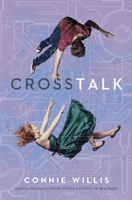
In Crosstalk by Connie Willis, a simple surgery to promote empathy between romantic partners goes hilariously wrong. It shows how constant, complete, personal connection is anything but desirable. Briddey Flannigan should have known, since the cell phone company, (COMMSPAN) she works for in a US city, is very nearly a model of what will come, with gossip seemingly carried on the breezes! And avoiding telling her family the news that she and her perfect boyfriend, Trent Worth will be having the implantation of a devise which will result in empathy,( if they are truly in love), before she tells her friends at work is, well, a lost cause.
The entire novel moves at a breakneck pace from one situation to another. Just as soon as Bridey has settled her family, her boyfriend Trent springs a speeded up surgery schedual on her, so she’s off to the hospital. And avoiding gossip and her family, by hiding her car. After seeing that her family has no boundaries where it comes to Bridey’s privacy one begins to see why she’s so secretive. And why she settles on the up and coming executive Mr. Worth, and his push to get the EED (the empathy device) before they marry. Which her family and CB Schwarz think is a really bad idea–and they all email, call, or text her. She argues it’s been tested before, and that even celebrities have had it done, and that they are even having the Dr. who invented the device doing the surgery. The surgery goes well. The aftereffects are, well, telepathy. And of course, the first person she hears is not Trent, but CB Schwarz, who is naturally telepathic.
Ms. Willis brings the claustrophobic and confusing experience that we imagine to be telepathy to a print page well. It can be confusing for the reader as well, but having a sense of the harried life of Briddey, makes it worth a little push just to get through those passages. It also gives her new relationship with CB a understandably difficult start. And exposes the real reasons behind Trent’s wanting to get the EED before getting married, like other couples.
This is the perfect introduction to Connie Willis and her comic timing, her patter, and infectious humor and sense of irony. If you enjoy Crosstalk, you’ll enjoy, To Say Nothing About the Dog, and Bellwether.
Crosstalk, by Connie Willis, Del Rey, 978-0-34554067-6
Posted in Books & Reading
Tagged Connie Willis, Crosstalk, Friday Reads, Rom-Com, Science Fiction, Telepathy, too-connected society?
Leave a comment
Friday Reads: The Chalk Man, by C.J. Tudor

The Chalk Man
by C.J. Tudor
The Chalk Man, by C. J. Tudor is a debut title in the mystery/thriller vein.
To get the full impact of the story, read the prologue, of course. But be prepared for some gruesomeness and violence. It is a murder mystery. But also, it’s about growing up in a small town in the mid 1980s, in England. But except for the definite English flavor, it was remarkably like growing up in a small town in the U.S. But one year, life goes horribly wrong, small actions have horribly large and deadly results, and the lives of a group of friends are changed. We meet the main character, Eddie, in 2016, as an adult, looking back on the incident, so he begins the reminiscing, and then the chapter changes, and the main character is 12, living at home with his dad, a struggling article writer and his mom, an “abortion” doctor. It’s the summer holiday, like our summer break, and the kids are out of school, the fair is in town and it’s the first year they are all allowed to go without adult supervision. Eddie loses his wallet, and while looking for it, sees for the first time, a new teacher, Mr. Halloran, an albino, and teacher. He also backtracks to a ride called a waltzer, and is staring at a beautiful girl, when a car on the ride flies off. In the mayhem, the girl is badly hurt, and Mr. Halloran needs Eddie’s help to keep her from bleeding too heavily until the paramedics arrive. Eddie wouldn’t have lost his wallet if he’d kept it in the fanny pack his parents had him wear, the first small action which leads to much bigger things. He and Mr. Halloran don’t become friends, but there is a kind of bond between them.
Back in 2016, adult Eddie, (42) is an English teacher at the school he graduated from. And we meet Chloe, his lodger, (20), in dyed black hair, who works at an “alternative rock/goth clothing store. Not his usual type of lodger, but his last prospective lodger didn’t show up, without explanation, and a friend knew someone who needed a room. A small action with larger consequences later. And he’s expecting a visit from a childhood friend, one closely associated with the really traumatic year they all went through. He’s come back and wants to write a book about what happened. Because, he says, he knows who really did it. And we all know, someone with that kind of knowledge never lasts long in a mystery!
In some ways, there are two stories going on, one in the 80s, and one in 2016. But they are tied together by small incidents, woven together in a very precise way. It also has a few shocks, that I should have seen coming, but still the one at the end is a big one. Let me know if you saw it coming.
Kirkus Reviews: The Chalk Man, murder, mayhem, and mystery in a sleepy English village.
The Chalk Man, by C. J. Tudor, Crown Publishing, an imprint of Penguin Random House LLC, New York, ISBN 978-1-5247-6098-4
Posted in Books & Reading
Tagged #FridayReads, C.J. Tudor, English village mystery, Friday Reads, murder mystery, mystery, The Chald Man
Leave a comment
Friday Reads: Just One Damned Thing After Another: v.1, The Chronicles of St. Mary, by Jodi Taylor
Just One Damned Thing After Another: Chronicle of St. Mary’s, by Jodi Taylor shows how historians are trained to “investigate major historical events in contemporary time.”, but don’t call it time travel! Actually, I started this series with what I thought was the last book, Lies, Damned Lies, and History, v.7 and was so intrigued with the characters that I wanted to start the series from the beginning!
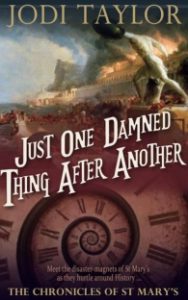
Just One Damned Thing After Another by Jodi Taylor
It begins with Max, (Madeline Maxwell), a disruptive, unhappy, student, being mentored in school by her head teacher. Next, a letter from the same head teacher, guides her from academe to the doors of St. Mary’s Institute of Historical Research, an adjunct of the University of Thirsk. Taking the tour of the facility with her mentor, she notices some oddities: little remarks about not having had an interview, she notices they have a security section, and a hanger named after Stephen Hawking. Finally she has “the interview” with the facility, which is when the real reveal of what they do at St. Mary’s occurs. Since she studied archeology and anthropology, with emphasis in Greek and Roman times, and has experience in archeological digs, she jumps at the chance to time travel. She signs up, and joins a small class of would be “historians”.
It is set in the UK in the fairly near future. The relationship with the University is of course fraught with politics and academic tensions. The borders of America (The United Sates) have been closed. And a great deal of funding is going toward Mars exploration, or a possible manned Mars trip. And, as a side note, all of this is run by some members of the same institution, but from a future form of the same institution. And the muse of history is the director’s PA (personal assistant).
While it isn’t perfect, the series is fun, raucous, accident prone, and in turns, deadly serious and on a dull weekend, or too cold, or too hot Nebraska day, the perfect antidote to very nearly everything. If you grew up on James Bond, Benny Hill, Saturday Night Live, Dr. Who, Monty Python’s Flying Circus, or simply like any or all of those shows, this is just the thing for you! Especially if you don’t mind it filled with really interesting parts of History, that feel well researched.
Chronicles of St. Mary, in order, as best as I can tell:
- Just One Damn Thing After Another
- A Symphony of Echos
- A Second Chance
- A Trail Through Time
- No Time Like the Past
- What Could Possibly Go Wrong?
- Lies, Damned Lies, and History
- And the Rest is History
- An Argumentation of Historian
Various Short Stories–Please muddle through them as you will!
Just One Damned Thing After Another: Chronicle of St. Mary, book 1, by Jodi Taylor, Nightshade, 9781597808682, 2013, paper back, $12.99
Friday Reads: Foundryside: A Novel, by Robert Jackson Bennett
Great world buildings, eccentric characters, and a solid plot that keeps me guessing, will always catch my attention, and Foundryside, by Robert Jackson Bennett has all of that and more. In so many ways it’s also unusual–set in a tropical seaport town, of a world that has seen an apocalypse wrought by an unusual type of magic called “scriving” by the surviving, thriving, inhabitants.
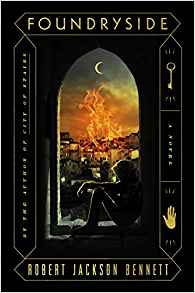
Foundryside by Robert Jackson Bennett
The merchant houses of Tevanne, rediscovered the art, and used the power of “scriving” to conquer other cities, create empire, and spy on each other. The tools they create are powerful, arrows that vibrate so hard as they go through the air that they disintegrate; rapiers that accelerate when put into motion, because they believe they’re going so much faster, and can go through tree trunks; and suites of armor that barely need inhabitants to kill. So of course, they create these items, and more, behind their own walls. Each merchant house is nearly a city-state with their own culture.
The people unlucky enough not to be born to the houses, or useful to them, live in the commons, the areas outside their walls. Like Sancia, a very good thief, who has a rare ability of being able to listen, and understand the scrivings on objects–floors, walls, and locks. A job comes her way through her fence to steal an item that’s just arrived in Tevanne. Which is when everything goes wrong, of course. The item is a very old, rare, scrived artifact, from the original practitioners of scriving, and talks, in a way. Its name is Clef. And he’s freaked out that she can hear him. She’s very freaked out that he can talk! And life just gets more complicated from there, with scions of merchant houses run amok, scrived humans (which shouldn’t exist), the already slightly crazy practitioners of a fractured art, and a lot of people doing impossible things such as shooting crossbow bolts at our heroes.
Included here is an interview with the author on SYFYWire.
Foundryside, Robert Jackson Bennett, Crown, New York, ISBN 978-1-5247-6036-6
Posted in Books & Reading, Uncategorized
Tagged #FridayReads, Dark Fantasy, Fantasy, Foundry, Friday Reads, Robert Jackson Bennett, Young Adult
Leave a comment
Friday reads; The City of Lost Fortunes, by Bryan Camp
The City of Lost Fortunes by Bryan Camp is an urban fantasy, but in the way of the best Fantasy and Science Fiction, it’s so much more. It makes you think about questions of morality, doing the wrong thing for the right reason, all the shades of gray adults maneuver in the real world, but on steroids in an urban fantasy. Each chapter also begins with a section about mythology, superstition, and religion–which I found fascinating. I didn’t always agree, but it showed me the flavor of New Orleans, where this fantasy takes place. The writer, began writing this on his way out of the city during the flooding of hurricane Katrina.
It’s set in New Orleans, 6 years after Hurricane Katrina hit, and Jude Dubuisson lives on the street, sometimes using his “gifts” to help customers find the lost, from a mother’s earings, to a child taken all the way to Ohio. Not always simple, his gift, he can find the lost item and tell you so much more. But since the hurricane, neither New Orleans, or Jude, has been the same. It’s been raw, painful, to open to his gifts, and he has drawn away from it and himself. But now, his old partner has an invitation that begins it all again. He owes a fortune god a favor, and goes to the meeting place, to be dealt a hand of poker with tarot cards. His seat is among the four gathered supernaturals, a vampire, Scarpelli; an angel, Wings; the Egyptian god of Scribes, Thoth; and voodoo god of the crossroads riding a middle-aged priestess, Papa Legba; and the luck god of New Orleans, Dodge, who resembles the laughing Buddha, or Budhai statues. Jude may owe everything to everyone, and draws a hand of 5 blank cards. He leaves the game, believing it’s a dead man’s hand, but it’s Dodge who is killed.
The characters are well drawn, and even side characters are more than cutouts, but its hard to be certain who will be more important to the story. And the story is a wonderfully worded wild ride. There’s enough here for the literature reader, the travel reader, and the folklorist. We see so many facets of New Orleans actual culture, along with the supernatural aspects in this story, one can nearly smell the different city streets.
The City of Lost Fortunes by Bryan Camp, Series: A Crescent City novel, Houghton Mifflin Harcourt, 2018, hardcover, ISBN 9781328810793

